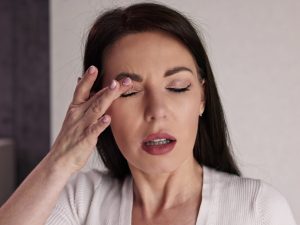Some people do vital work without drawing attention to themselves. When you emerge from a fantastic concert, you’ll be raving about the singer rather than thinking about the sound engineer who made it sound so good. When you land after a long-haul flight, you’ll thank the pilot and cabin crew because they’re most visible – you’re less likely to think of air traffic controllers and luggage handlers. When you watch a great movie, the focus is on the leading actors rather than the set designers and costume-makers.In the intricate world of the human brain, two key players quietly govern much of what we think, feel, and do – grey matter and white matter.Often overshadowed by discussions about neurons and synapses, grey matter and white matter are like the unsung heroes of your neurological system, each playing a vital role in making you who you are. But what exactly are they, and why do they matter (if you’ll pardon the pun)?
What is grey matter?
Grey matter is an essential tissue in the brain and spinal cord that forms early in foetal development. Between birth and age 8, the volume of grey matter increases. Between the ages of about 8-20, grey matter becomes more dense, allowing for high processing and further mental development.Grey matter plays a significant role in all aspects of life and functioning. It’s particularly involved in:- Mental functions
- Memory
- Emotions
- Movement.
- Stroke – when deprived of oxygen, grey matter will begin to die, which can lead to irreversible brain damage and loss of function
- Parkinson’s disease – motor function is weakened when neurons decrease dopamine production
- Alzheimer’s disease – this occurs when plaque begins to build up in areas of grey matter within the brain
- Trauma – blunt force trauma can cause a haemorrhage that damages grey matter.
What is white matter?
White matter sits in the deeper tissues of the brain. It’s formed by a large network of nerve fibres (axons) that enable communication between different areas of the brain. These nerve fibres are covered in a protective sheath called myelin, which gives white matter its colour.White matter requires good blood flow and nutrients to remain healthy. When deprived of necessary blood and nutrients, white matter can damage the nerve fibres, causing them to swell, break or die. White matter disease can lead to:- Memory problems
- Balance issues
- Falls
- Slow walking
- Difficulty doing two things at once
- Depression
- Urinary incontinence.
Grey matter vs white matter
Grey matter represents about 40% of the brain and spinal cord and white matter accounts for the other 60%.Grey matter consists of short ‘fingers’ called dendrites that communicate with nearby neurons (brain cells). White matter transmits those messages to more distant parts of the brain and spinal cord.Grey matter is where we process information and sensations. It’s where you think. It enables voluntary movement, learning and speech. White matter is the communications director, carrying messages between grey matter areas and beyond them to other parts of the body.As you can see, the brain needs both white matter and grey matter to function effectively.What matters at Macquarie Neurosurgery and Spine?
Because grey matter is found throughout the brain, it’s a regular part of our work at Macquarie Neurosurgery and Spine. We understand its importance and, as in everything we do, we pay careful attention to it.Please contact us if you’d like our assistance.Disclaimer All information is general and is not intended to be a substitute for professional medical advice. Macquarie Neurosurgery and Spine can consult with you to confirm if a particular treatment or procedure is right for you. Any surgical or invasive procedure carries risks. A second opinion may help you decide if a particular treatment is right for you.References
- Cleveland Clinic, Grey matter, https://my.clevelandclinic.org/health/body/24831-grey-matter, [Accessed 13 September 2024]
- Physiopedia, Grey and white matter, https://www.physio-pedia.com/Grey_and_White_Matter, [Accessed 13 September 2024]
- Medline, White matter of the brain, https://medlineplus.gov/ency/article/002344.htm#:~:text, [Accessed 13 September 2024]
- Cleveland Clinic, White matter disease, https://my.clevelandclinic.org/health/diseases/23018-white-matter-disease, [Accessed 13 September 2024]






